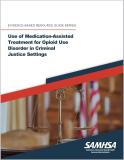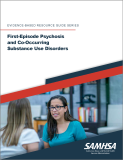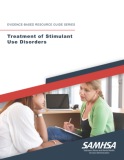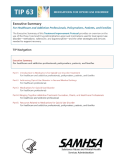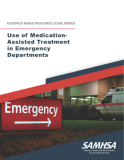
This guide examines emerging and best practices for initiating medication-assisted treatment in emergency departments. It also reviews the existing literature and science of the topic, identifies gaps in knowledge, and discusses challenges of implementation.
Units per Product
Download
Use of Medication-Assisted Treatment in Emergency Departments
File Type: PDF
File Size: 9.54 MB


